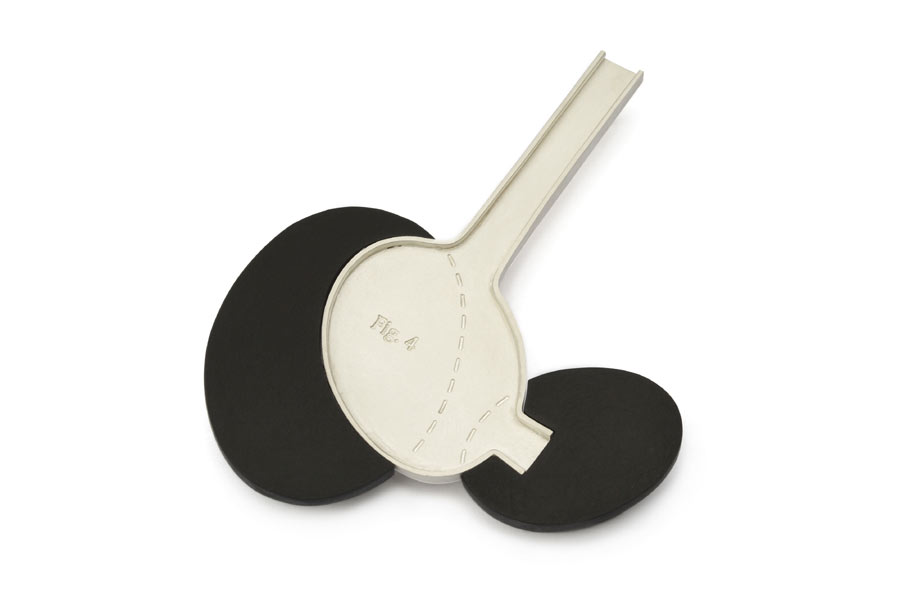
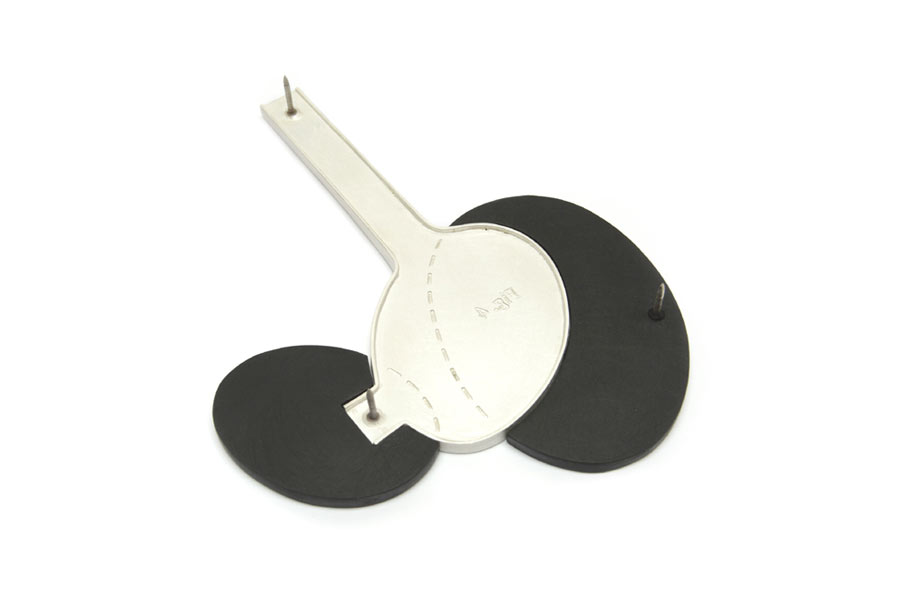
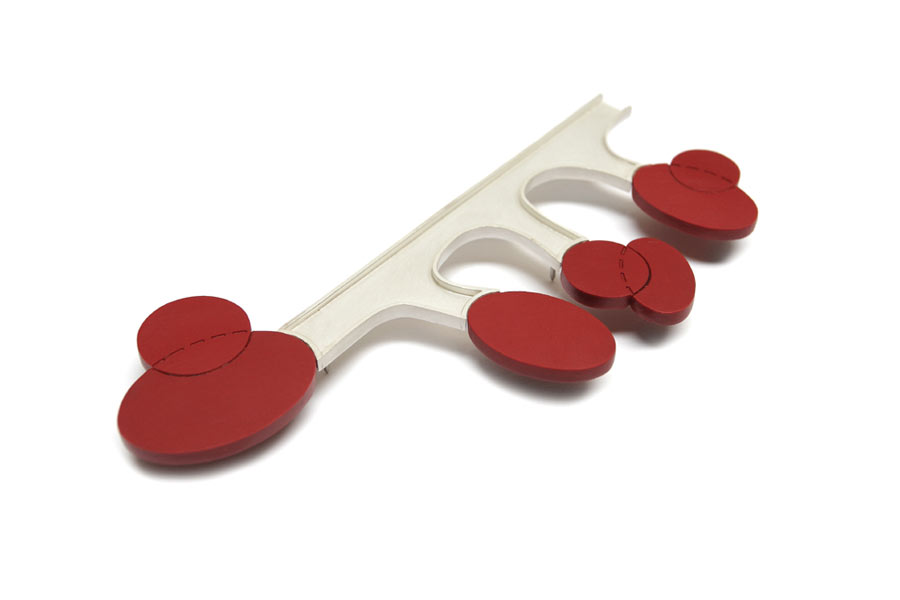
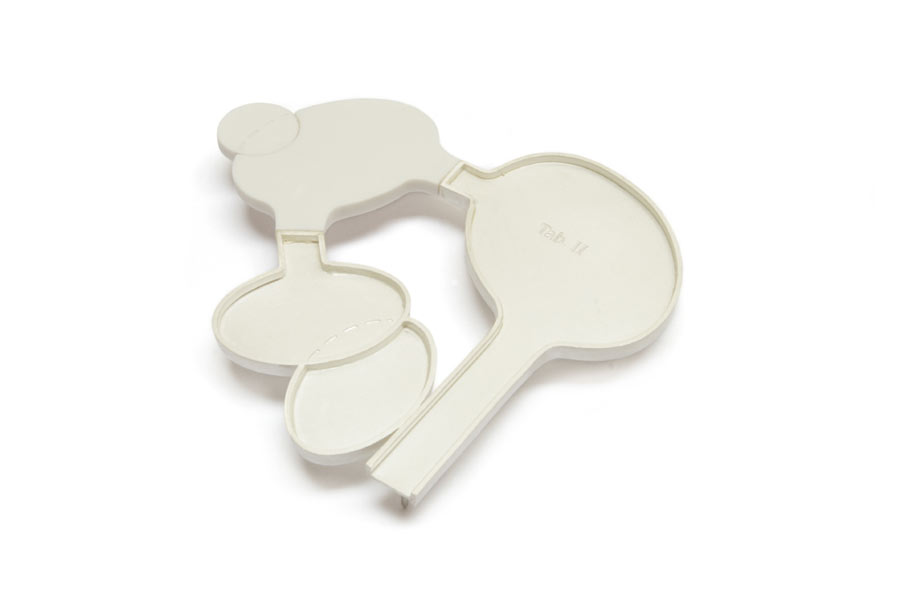
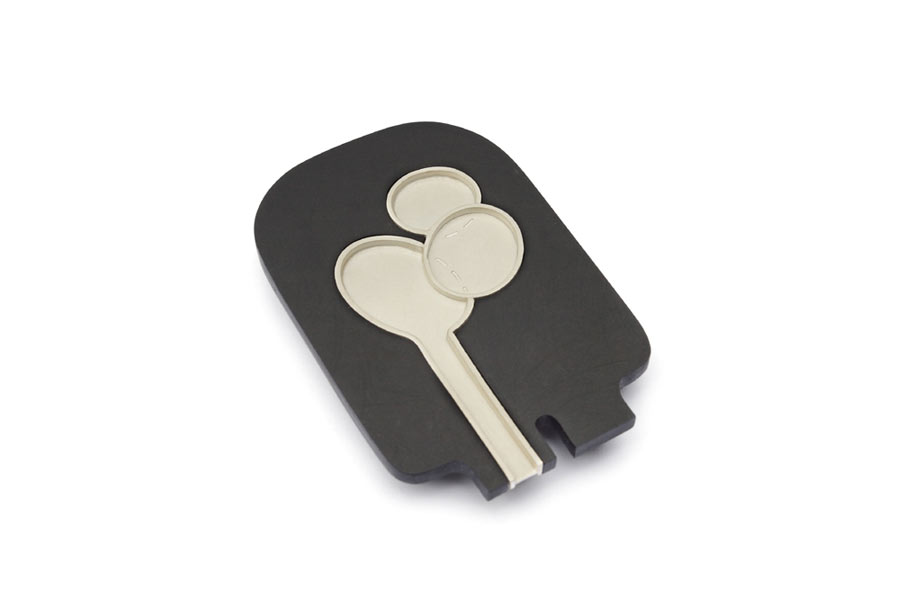
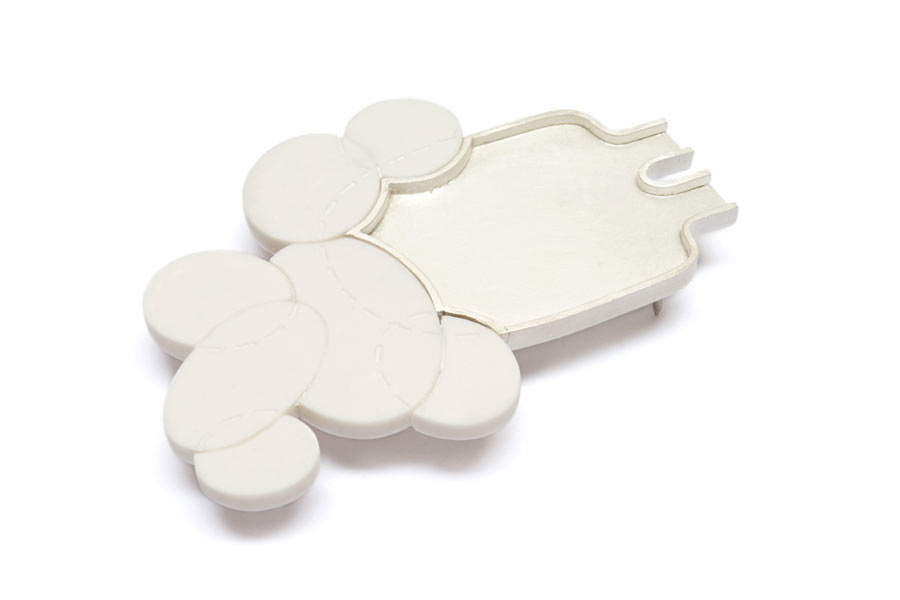
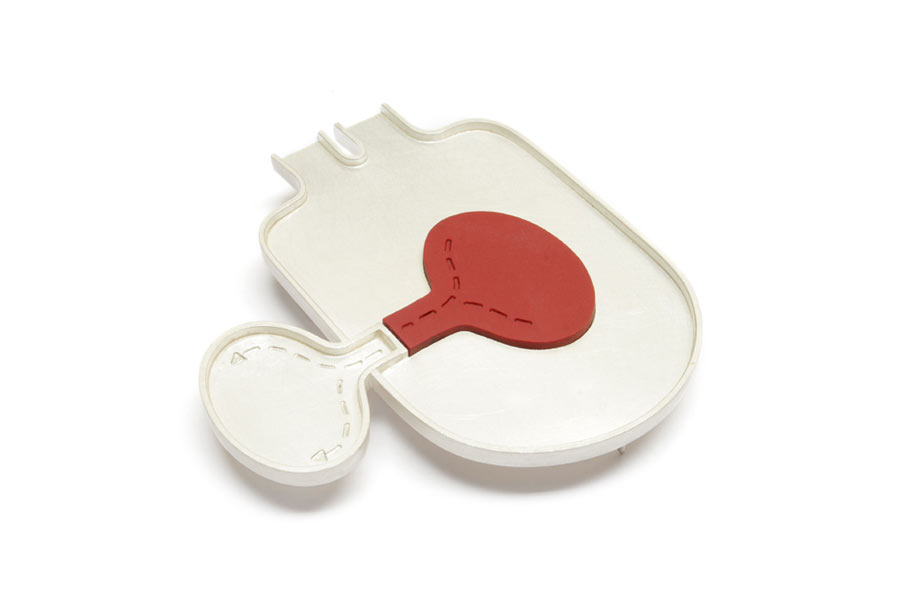
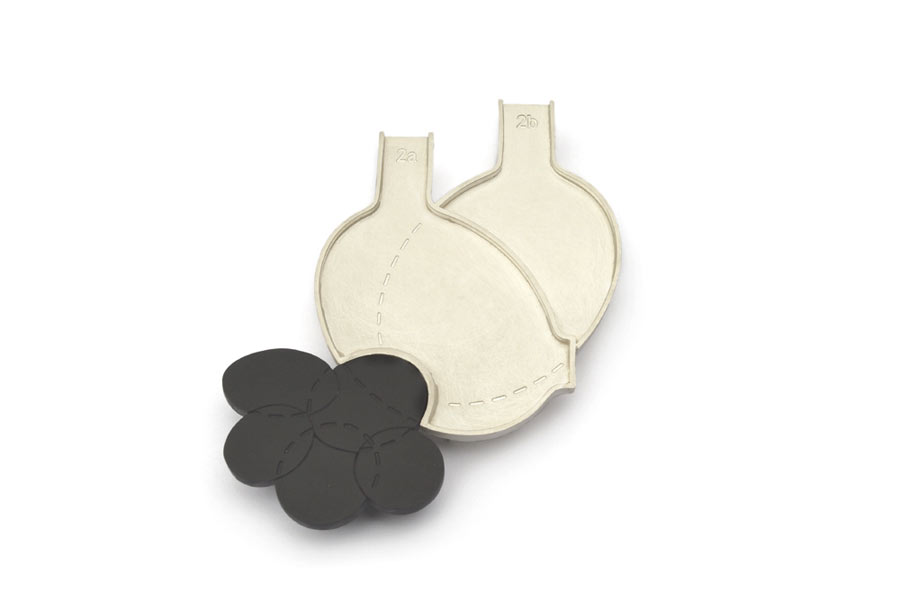

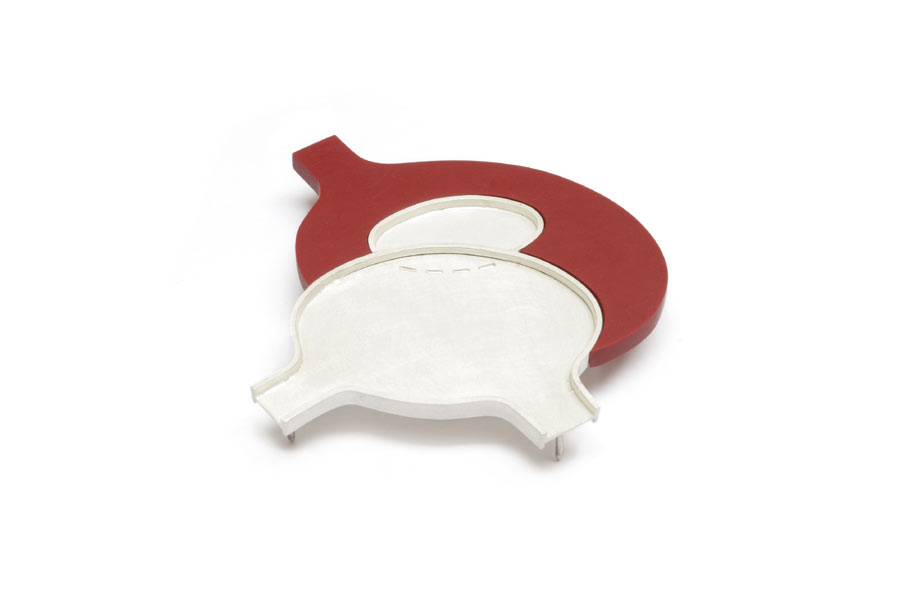
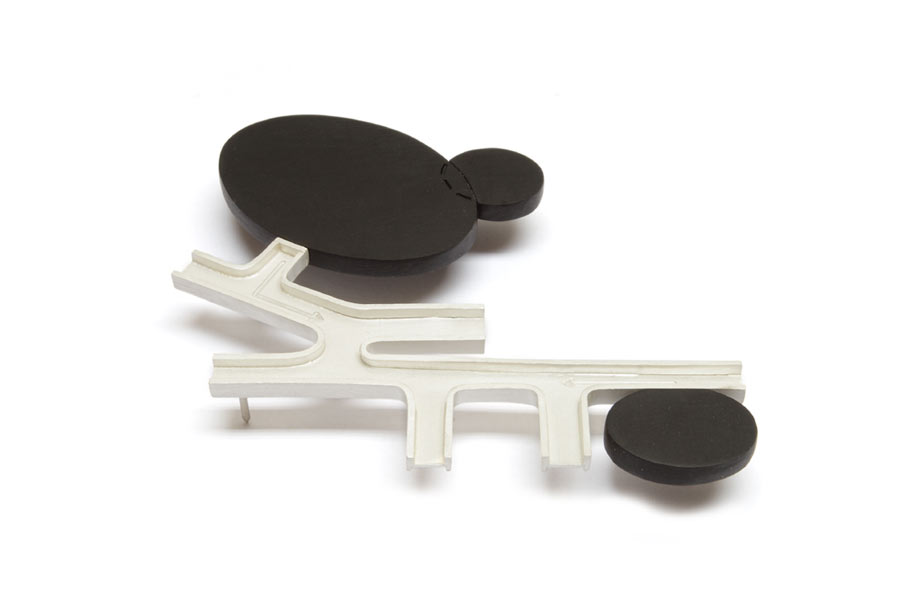
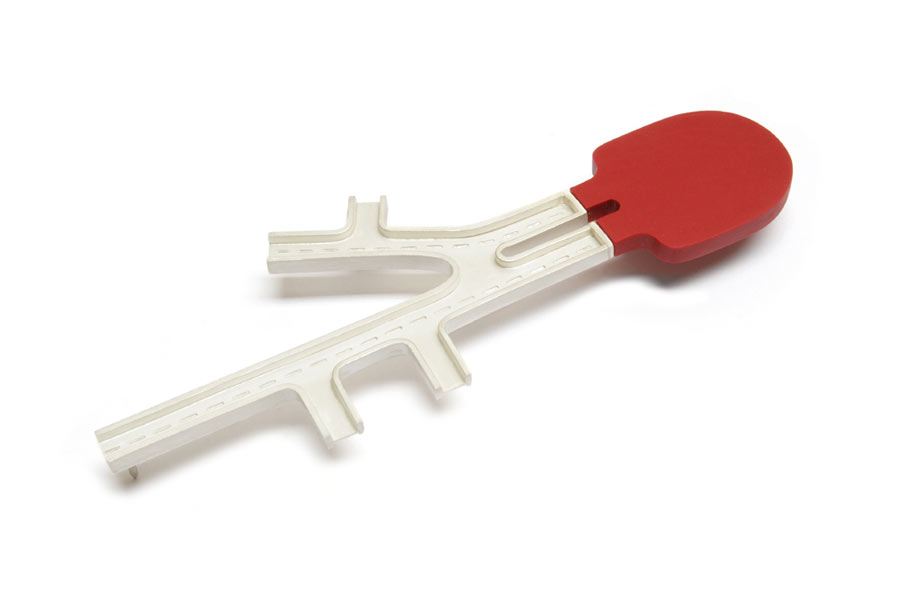
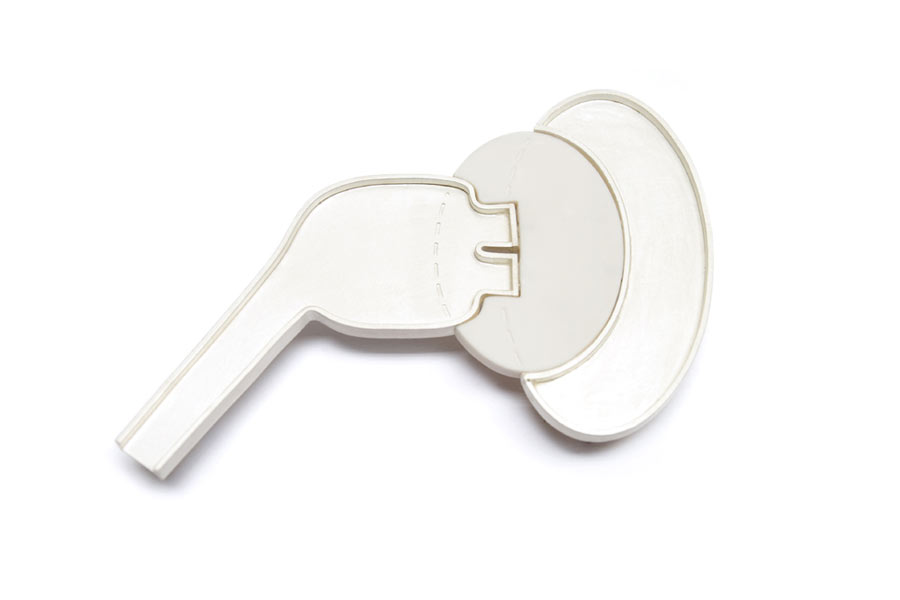
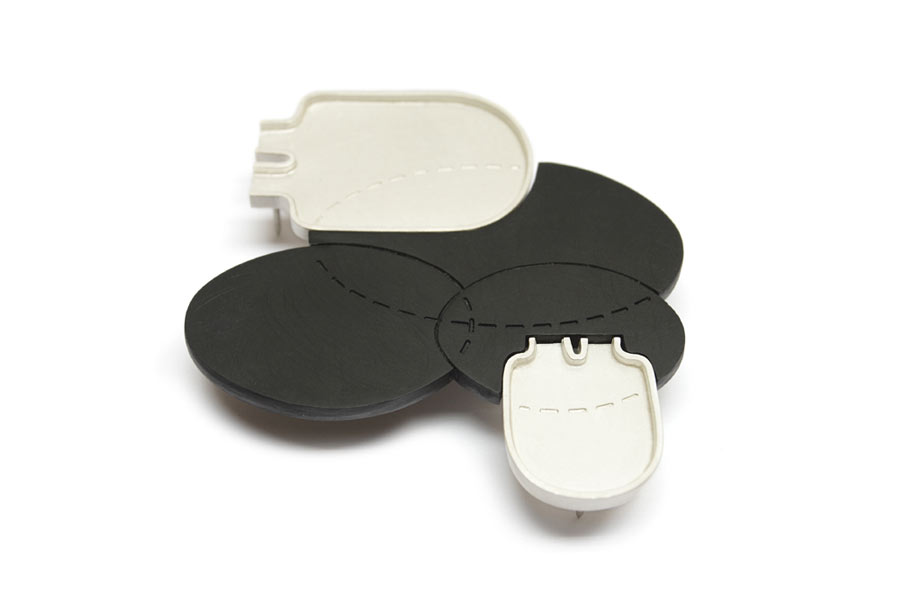
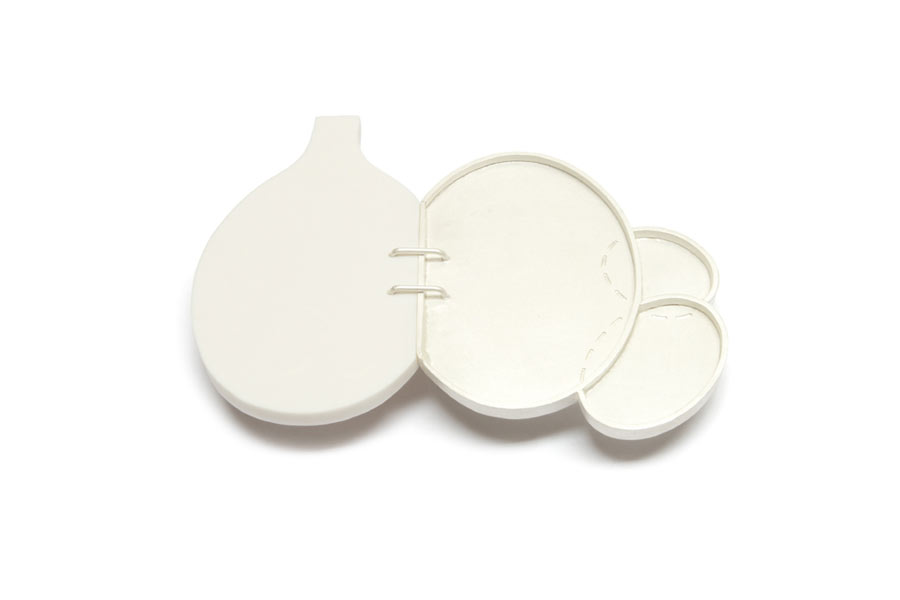
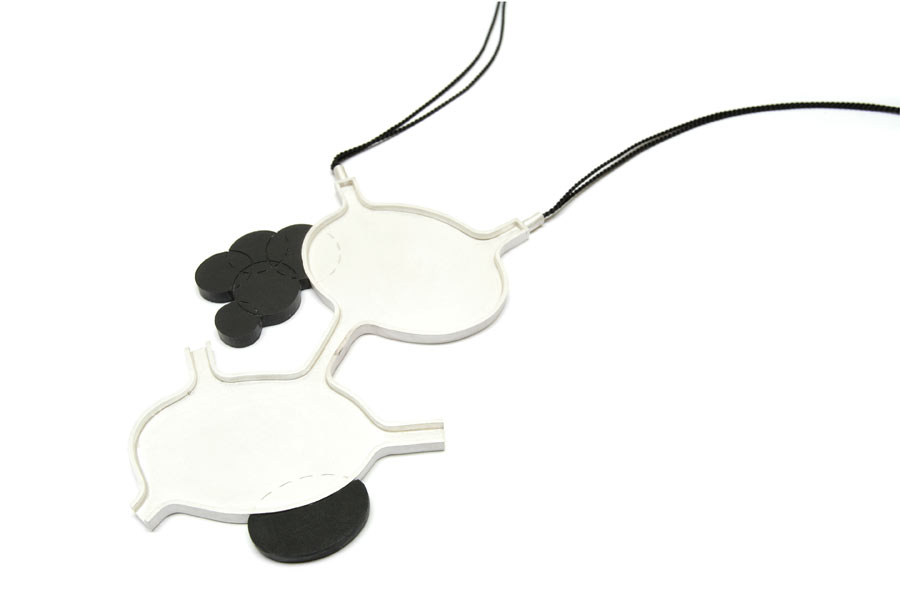
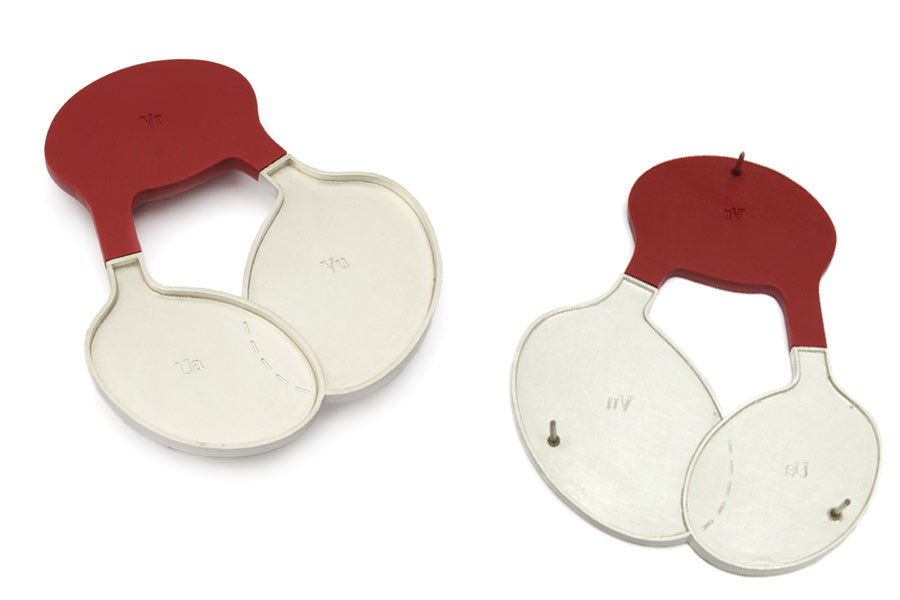
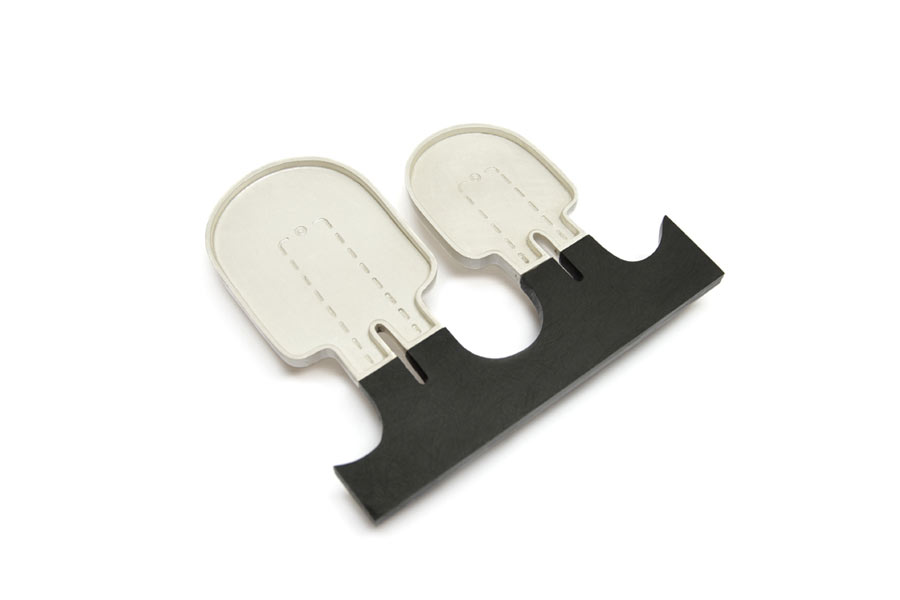

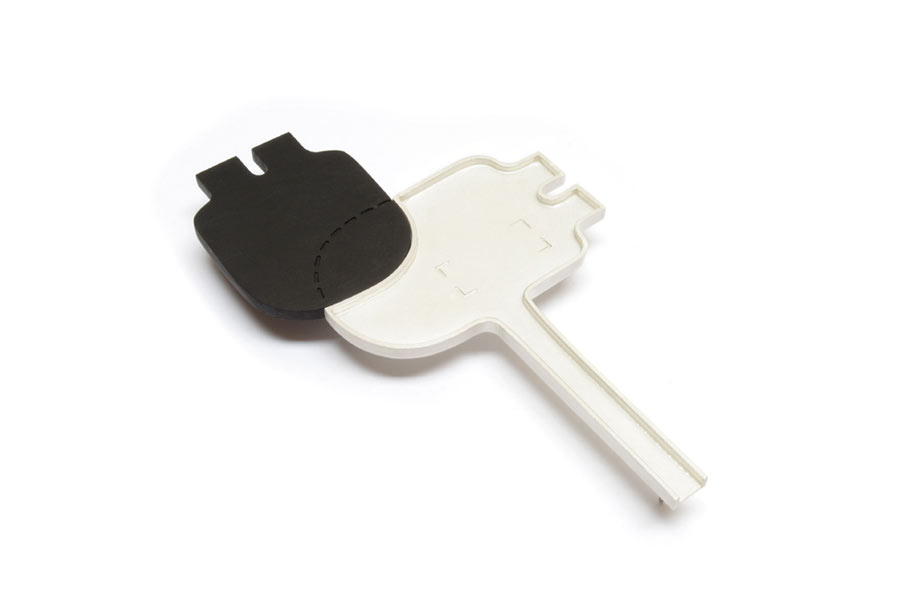

| NEXUS:
In Search of a Connection Between the Whole and Its Component Parts Drawings seem to be on the verge of coming to life. Lines are fleshed out, arrows light up and codes give clues. Volumes drive out, merge with or drift across one another. It is as if we are watching the emergence of a new order. Flat slices of abstraction clutch at reality. Katja Prins's jewellery has always had a clear three-dimensional structure with its suggestive, spatial forms brought together in compositions which tell their own narratives like a natural whole. Over the years, this collage technique has continued to emerge ever more resolutely to the fore. A technological infrastructure of pipes and joints has often acted as a symbol of the complexity of the world we live in. Sometimes the component parts are expressly recognizable shapes, sometimes only representations. The spoon shapes in the Continuum series are a clear example of the former, while the porcelain elements in the Inventarium pieces are solely referential: their unexplained texts and codes symbolize the world of the laboratory. Although her style is still recognizable, Prins employs a new idiom in the Nexus collection. The subject motivating the new works is so abstract that they now resemble diagrams and drafts. Her pieces have become virtually two-dimensional with a subtle hint of volume, which with this flat structure has an even more intriguing effect. Prins is immensely fascinated by the unstoppable drive of science to continue to push its boundaries. Throughout her studio, we see the sometimes terrifying results: medical diagrams, recordings of encroaching technical installations and images of people who no longer seem connected to ordinary life. Not only does this unnerving panorama serve to decorate the studio, but, unbeknown to us, it also constitutes the daily reality in which all of us live. Every trend that Prins encounters in the shadowy world between scientific potential and the systematic patterns of biology stimulates her imagination. They raise questions that form the basis of a new jewellery series. Prins does not intend to give us answers to these questions. Rather, each object merely contributes to a greater discourse. The problems are too complex for simple solutions. The works are about wonderment, not about criticizing or seeking approval. Again, the artist tries to assess the world of science like an innocent bystander. The scientists have now crawled under our skin: in their laboratories, they manipulate DNA and the structure of cells and tissue. Almost unobserved, the human species is being corrected, modified and rebuilt. A hip or heart valve replacement is a miraculous achievement, and pills that help fight the proliferation of cancerous cells are widely admired. But when the objective is no longer to heal but to improve, we suddenly find ourselves on a slippery slope. Should life be extended indefinitely? Should we actually aim to realize everything that is in our power? Questions about control and abuse are raised: who actually determines what is good, beautiful or happy? It seems as if Prins has carried out an MRI scan of the scientific vanguard in this new series of jewellery. In thin layers, she prepares the very achievements of science itself for closer inspection. But although the structures seem much more lucid, the mystery remains hermetic, and doubt grows. Are achievements like gene therapy and synthetic biology a brilliant leap forward, or does such virtuosity threaten our existence at its very core? Prins's creative process involves a refined interplay between the associations that the materials can evoke. She always uses a material which is alien to jewellery but which makes a strong contribution to the multilayered aspect of the end result. Here, the artist is at her strongest. Because of its sexual connotations, the rubber in her graduation work left the viewer feeling uneasy. With white porcelain, Prins played with the concepts of 'sterile' and 'durable', while sealing wax referred to rituals involving privacy, promises and obligations. In the plastic elements in the Machines Are Us works, it was not so much the material that stirred the imagination but rather the finely detailed surfaces. Only the meaning of silver, which she uses in nearly every piece, changes with the context. Before all else, it functions as an archetypal metal necessary for the construction of installations and machines. In addition, Prins ascribes more unconventional meanings to it in the various series such as purity, hard-heartedness and listlessness. The Nexus works make reference to paper, thus allowing, for instance, the placement of symbols on the surface. Finally, silver is always an overt reference to jewellery itself. Its 'status' as a precious metal results in a pleasing ambivalence between artistic intent and practice. With the abstract subject of the Nexus series, Prins unexpectedly offsets silver through the use of red or white coral and black onyx, but in an artificial form of blocks of reconstructed stone. Mechanized production has rendered the material meaningless. This is a formidable challenge, since the artist is effectively left to her own resources, the proverbial clean slate. Only the antiquated language of colour is allowed to play a role: red represents blood and life, white frigidity or virginity, and black death and infinity. It seems as if Prins has made a scan of her earlier work with these objects. The Nexus series is a synthesis of all her fascinations. Diverse themes converge, and the intervening hand of man is ubiquitously both a motivating factor and a driving force. Suddenly, it becomes clear that for many aspects it is simply a question of abstraction and scale. Cell structures seem to demonstrate many similarities to high-tech organization charts, and floor plans employ the same language as that of medical abstracts. Compassion for living human beings can also be found in nearly all the works. It confirms why the artist has chosen jewellery as her medium; Prins places her commentary close to the body, which is also her subject. Her work shows that at all levels of society, humans are trying to alter the world: in pursuit of a better life, they go looking and digging everywhere, everywhere sparks are flying, and everywhere boundaries are pushed back. Euphoria alternates with fright. Prins gives us a magnifying glass, pushing us to investigate. Wear Prins's jewellery as a symbol of the autonomy of the human body and as a celebration of the infinite achievements of science, but also as a warning against unbridled, reckless ambitions. Choose from the possibilities your own story, your own association, your own piece of jewellery. Wear it as a sign of militancy, an activist's call to reflection. Ward Schrijver, art historian and architect, Amsterdam, NL (© Galerie Rob Koudijs) Photography: Francis Willemstijn |